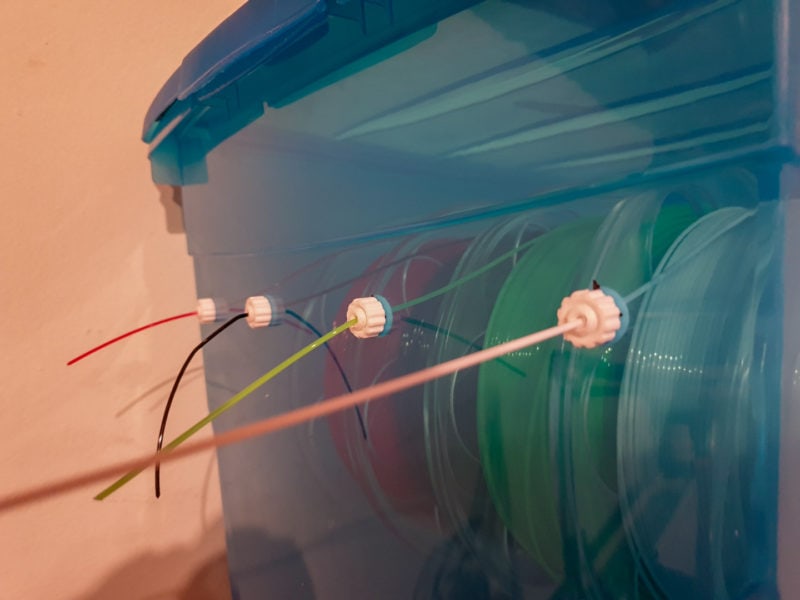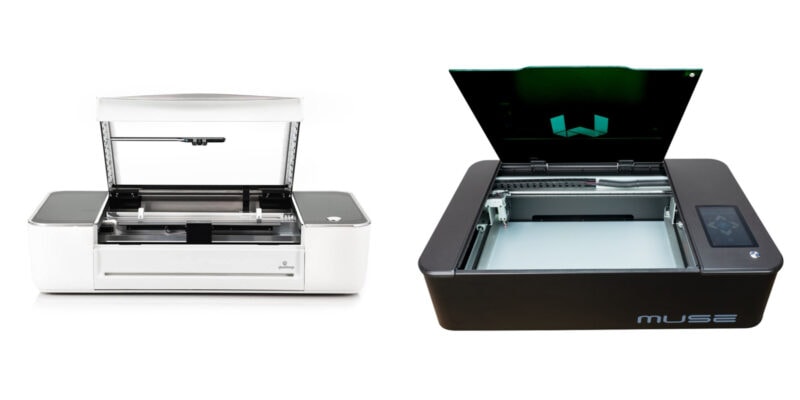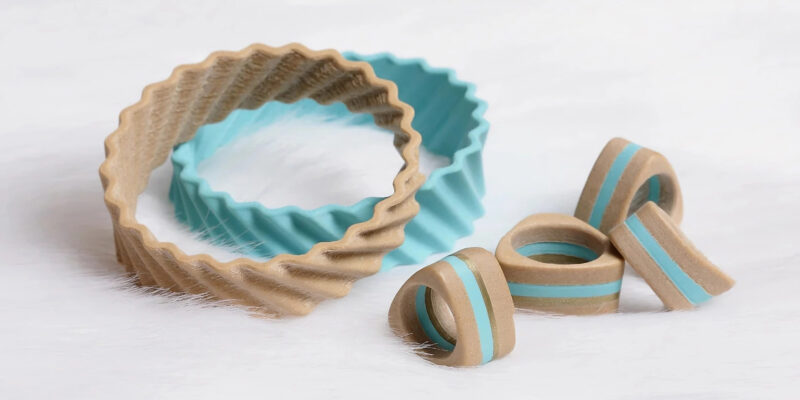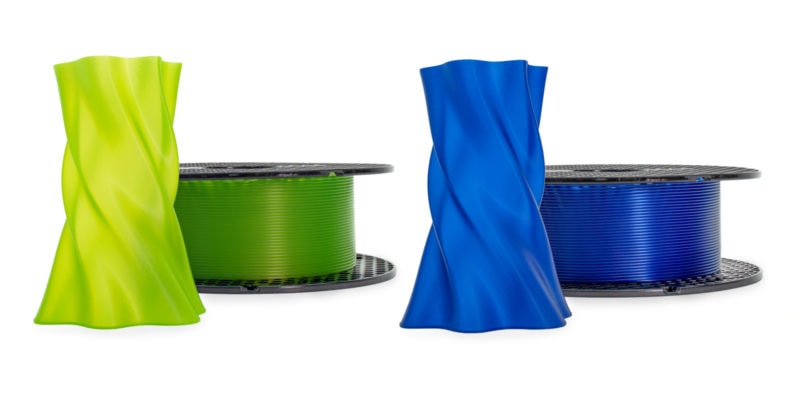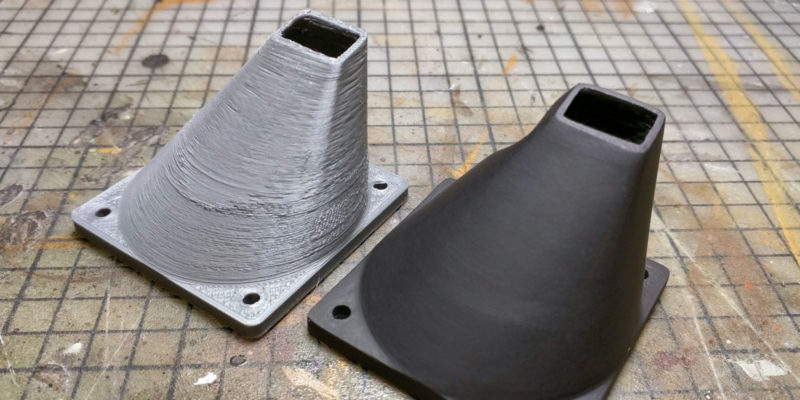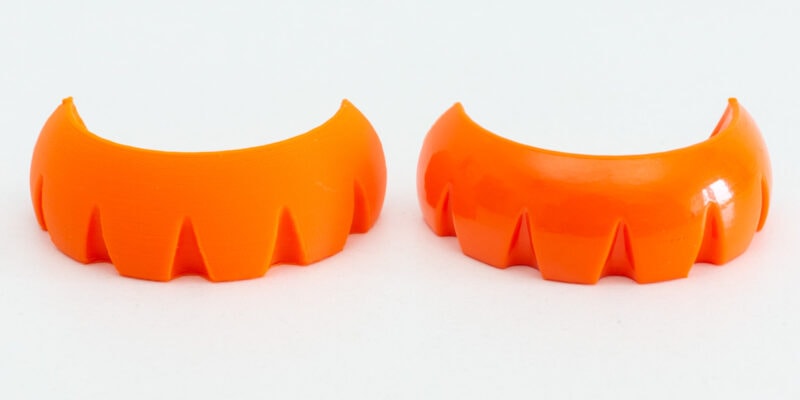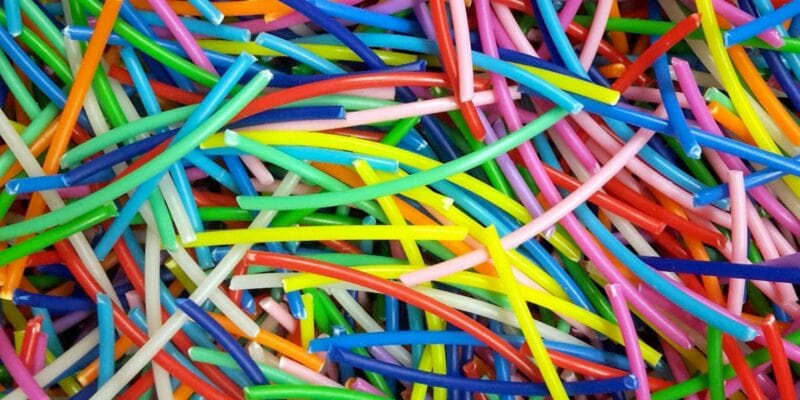PLA and ABS are two of the most commonly used filament materials in 3D printing. They have very different material properties and are each utilized in different situations depending on the project and the 3D printer being used.
In this article, we’ll look at PLA vs ABS in terms of their key properties, their uses in 3D printing, and what kind of 3D printer you need to print with them. We’ll also discuss the disadvantages of both materials, answer some of the most common questions new users ask, and which brands are the best for PLA and ABS.
What are PLA and ABS?
PLA (polylactic acid) is a biodegradable thermoplastic made from organic materials like corn starch or sugar cane. It is often used in plastic packaging, plastic cups and utensils, and medical devices due to its compostable nature.
ABS (acrylonitrile butadiene styrene) is also a thermoplastic, but it is derived from petroleum rather than organic matter. It’s a popular material for injection molding, interior car parts, plastic product casing, and so on thanks to its temperature and chemical resistance.
How Do PLA and ABS Compare?
Summary
| PLA | ABS | |
|---|---|---|
| Nozzle Temperature | 190-220C | 220-250C |
| Bed Temperature | 60-70C (optional) | 90-100C |
| Enclosure required | No | Yes |
| Strength | Good tensile strength | Good impact resistance |
| Flexibility | Poor – brittle | Good |
| Fumes | Little to no odor | Bad – needs ventilation |
| Heat resistance | Poor | Good |
| Glass transition temp | 60C | 105C |
| Shrinkage | Low | High |
| Printability | Good | Poor |
| Approx. price per kg | $20 | $25 |
Strength
In terms of tensile strength, PLA is a stronger material than ABS, which can make it more appropriate for 3D printing parts and prototypes that require rigidity.
Despite being slightly less strong, ABS has better overall durability. It is more impact resistant, can be stretched farther before breaking, and has better temperature and chemical resistance than PLA, which makes it better for creating end-use products.
If you are looking to print something that needs a high level of durability, such as industrial applications, other filaments like carbon fiber or PETG may be better options. Yet, neither is the strongest filament.

Flexibility
Between the two materials, ABS plastic has greater flexibility and is able to deform more before sustaining permanent damage. PLA filament is more brittle due to being harder and more rigid than ABS. This means parts printed in PLA are more prone to breakage when dropped or otherwise faced with a hard impact.
That said, neither PLA or ABS comes close to the flexibility of TPU filament.

Dimensional Accuracy
When looking at dimensional accuracy (how closely the finished print matches the original digital model) in PLA vs ABS, PLA is the clear winner. Due to the high temperatures needed to print ABS, it is more prone to warping and shrinking. Even the best ABS filament has this to some extent. This can affect the size and shape of the finished print in comparison to the original 3D model.
Warping
While both PLA and ABS warp to some degree, ABS does it the most. PLA tends to curl when either the print bed temperature is not high enough or the nozzle temperature is set too high, but overall has minimal warping. On the other hand, ABS has a tendency to warp nearly always, unless you take the proper measure of 3D printing it in an enclosed 3D printer.
Print Temperature
One of the biggest differences between PLA and ABS is their print temperatures. PLA has a significantly lower printing temperature than ABS.
PLA filament has a low melting temperature of about 200C. This makes it incredibly easy to use because you don’t necessarily need a heated bed or enclosure to get good results. Not only does this make PLA a more beginner-friendly filament, but it also works with a wider assortment of 3D printers, since many budget 3D printers do not have a heated bed or extruder that can reach a high enough temperature for ABS
The obvious downside to the low melting point of PLA filament is that finished PLA 3D prints have very little temperature resistance. They can’t be used in situations where they must be outside in hot weather and will often warp and soften if left in a hot car. Some brands of specialty PLA filament can be annealed to withstand higher temperatures, but that usually affects the dimensional accuracy to some degree and comes with extra post-processing efforts.
We have an entire guide on getting your PLA filament print settings right, so be sure to check that out for the best results with 3D printing PLA.
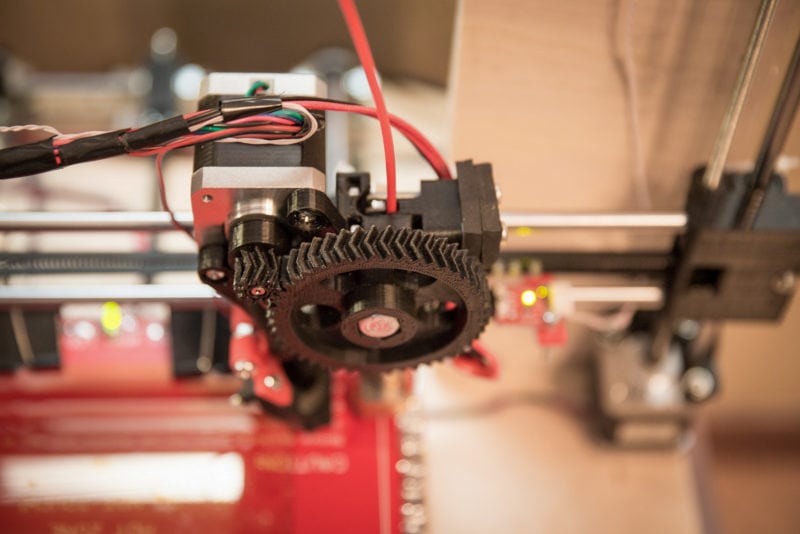
ABS filament, on the other hand, melts at a much higher temperature of about 230C and strictly requires a heated bed. It also usually requires an enclosed printer to keep the print temperature even, since sudden drops in temperature can result in cracking and warping of the 3D print. This makes ABS a fairly difficult material to use (especially for beginners) and limits the 3D printers it can be used with.
The advantage to this, however, is that finished ABS 3D prints are much more heat resistant than PLA prints. If you want to print something that will sit in the sun or a hot car, ABS is one of the best materials to print it in.
Printing Speed
PLA and ABS filaments print at roughly the same speeds, so these settings usually stay universal between the two materials.
3D Printing Fumes
Another big difference between the two materials is amount of fumes they put off during the 3D printing process. While PLA generally produces little to no noticeable odor or fumes, ABS has a very strong smell while printing.
In addition to the general unpleasantness of the smell, ABS fumes can cause allergic reactions and other symptoms like respiratory distress, nausea, and headaches if you are exposed for too long.
One notable study also found that ABS put significantly more particles into the air than PLA, and those particles tended to be toxic to our respiratory health. That is yet another reason users typically have their printers enclosed for 3D printing with ABS filament, so they can easily filter 3D printer fumes without being exposed to them.
Some 3D printers come enclosed by default, but you can also add a DIY printer enclosure or ready-to-use aftermarket enclosure at a later point in time.
If you don’t have an enclosure, you can use fans or hood vents to pull the worst of the fumes away, but it is best to not spend a lot of time in a room or area where you are 3D printing ABS filament.
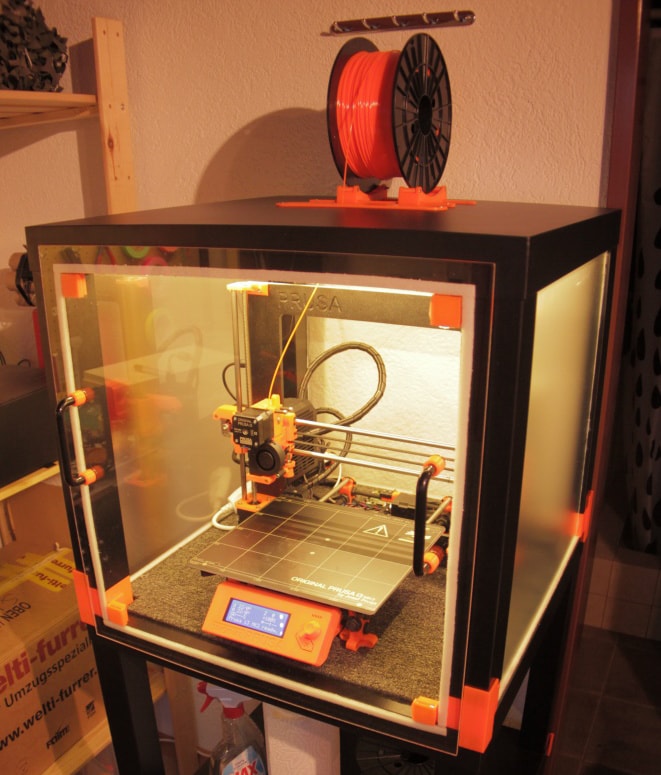
Storage
While both PLA and ABS are susceptible to moisture, PLA filaments are affected significantly more. PLA easily takes in moisture from its surrounding environment, and when it does, the filament becomes more brittle. It also bubbles and sizzles during the 3D printing process as the nozzle heats the moisture in the PLA filament to its evaporating point.
You can build or buy a filament dry box to keep your spools in proper condition between 3D printing sessions. You can also use a food dehydrator to dry out the filament before using it, but typically keeping your spools in an air-tight container prevents the need for those steps.
Post-Processing
Users who dislike a lot of post-processing work after 3D printing are usually drawn to using ABS over PLA thanks to ABS’s reactivity with certain chemicals.
PLA smoothing is done by sanding, filling, or epoxy coating the finished 3D print, whereas ABS can be cold or vapor smoothed using acetone. Acetone is highly reactive with acrylonitrile butadiene styrene and will eventually degrade the material with enough exposure.
Suspending an ABS print in a closed container with a small amount of acetone at the bottom will chemically melt the plastic just enough to get rid of print lines and other imperfections. This process can sometimes be completed in hours, but it usually takes 2-3 days.
Vapor smoothing requires heating acetone in a container (many people use old rice cookers that are no longer able to be used in the kitchen) and dipping ABS 3D prints in the vaporized chemical. This is a much faster process than cold smoothing and usually only takes a few seconds.
However, vapor smoothing is dangerous for a number of reasons. For one thing, acetone is flammable, so accidentally overheating it can lead to fires or small explosions. Additionally, acetone is a harsh chemical, and vaporizing it can make it easier to enter your respiratory system and cause issues. For these reasons, we do not recommend this post-processing method.
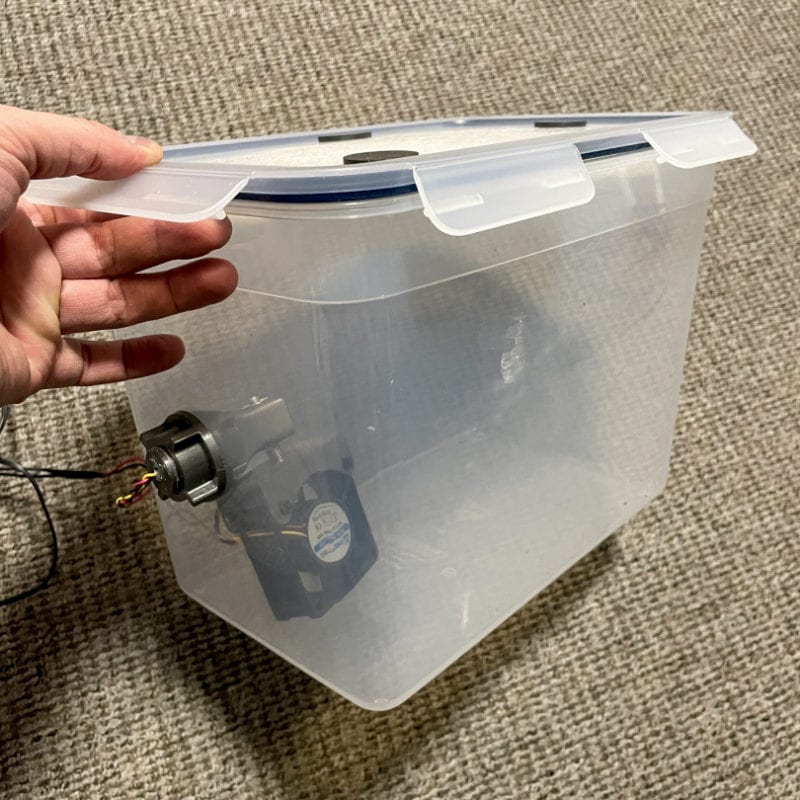
Biodegradability
PLA is a favorite among users looking for a more environmentally-friendly 3D printing filament option thanks to its biodegradability. That being said, some brands of PLA are more biodegradable than others, since it all depends on what (if any) other materials are present in the filament.
Most PLA will break down easily in a commercial composting process. Letting it weather naturally, on the other hand, can degrade it within eight months depending on the conditions. ABS, like most other oil-based plastics, is not biodegradable. It must be recycled or thrown out after use like traditional plastic products.
Price
PLA and ABS have roughly the same price of about $20-$25 per 1kg spool. They are the two most affordable 3D printing materials, which, in combination with their ease of use, is why they are the most commonly used 3D printing filaments. PLA tends to be slightly cheaper than ABS, but not so much so that price should have much of an effect on your choice between the two materials.
Even with PLA’s lower price point, it is always a good idea to choose one of the best PLA filament brands, since low-quality filaments can cause issues with your 3D printer, contain toxic chemicals, and other issues.
Choosing Between PLA vs ABS
If you aren’t sure whether to use PLA or ABS for your 3D printing projects, there are a few things you’ll need to take into consideration.
3D Printer
Your printer is a huge factor to consider when choosing a material for 3D printing. If you don’t have some of the necessary features for ABS on your printer, you’ll need to upgrade to a printer that does. PLA can be printed on most machines, whereas 3D printing ABS requires more specific features, such as:
- A heated bed
- Enclosed print area
- All-metal hotend
Any 3D printer that can print ABS can also print PLA, but not vice versa.
Intended Use
When deciding on using PLA vs ABS in a 3D print, it is important to think about its application.
If it will be exposed to high temperatures, then ABS is your best bet. If you want something rigid, on the other hand, PLA is the superior option. If your finished piece needs to be impact resistant, ABS is the better solution. A special PLA+ / Pro PLA blend would work for that as well.
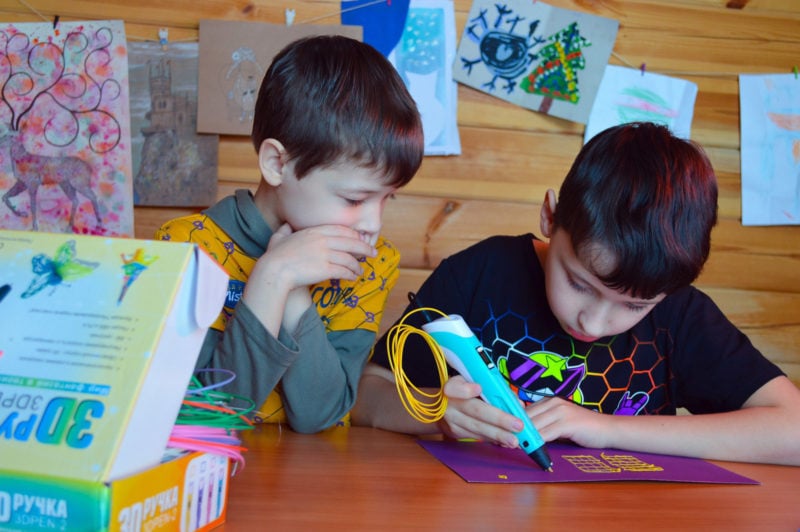
Health Concerns
If you don’t have the means to give your 3D printer sufficient ventilation or space to use it in a non-living area like a garage, it is safest to not use ABS filaments, regardless of what the end result needs to be.
In terms of the food safety of PLA vs ABS, PLA is more food safe than ABS. If you plan to 3D print anything that may be used near the mouth (this includes toys, musical instruments, etc), PLA is a much safer option.
PLA vs ABS: Which is Better?
Neither option is strictly better than the other. It depends on your budget, skill level, and your printer’s capabilities. Most importantly, it depends on what you intend to print.
PLA filaments are easier to print with, so it is ideal for rapid prototyping applications or parts that need a higher degree of dimensional accuracy. ABS filaments are better for parts that need impact or heat resistance or fast post-processing.
Is PLA or ABS Cheaper?
PLA and ABS are pretty evenly matched price-wise. A basic spool of PLA might be a few dollars cheaper than the ABS equivalent, but there is not enough difference to make one material more attractive than the other.
Is ABS or PLA Safer?
PLA is significantly safer to use than ABS. It gives off fewer fumes and toxins during the 3D printing process in comparison to ABS and does not need as much ventilation.
Similarly, PLA scores much higher in terms of food safety than ABS
PLA vs ABS: Which is More Flexible?
ABS filament is slightly more flexible than PLA filament. This makes ABS more impact resistant, as it has more give upon impact. PLA tends to be brittle and usually breaks on impact. Some specially formulated PLA+ filaments have added polymers that make PLA more flexible, so if you want more impact resistance without the high temps needed with ABS, PLA+ filament is a great option.
Conclusion
PLA and ABS are both widely-used 3D printing materials for many reasons. Their affordable pricing and wide availability make them attractive thermoplastic filament options for 3D printing enthusiasts of all experience levels. They both are capable of producing exceptional print quality with fine details and are strong enough to make everything from phone cases to 3D printed miniatures to functional prototypes.
While PLA filament’s properties, like its lower 3D printing temperatures, make it easier to use, ABS filament’s better impact resistance and structural integrity lead many users to tackle the learning curve. Both thermoplastics have their own unique properties, and now that you understand both, it is much easier to choose between ABS vs PLA for your specific needs.





